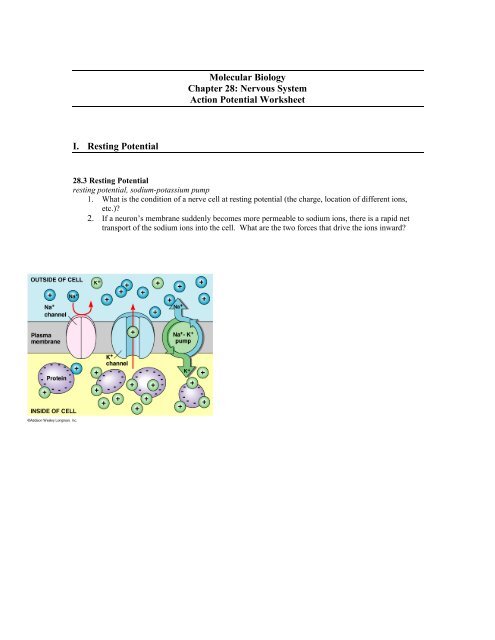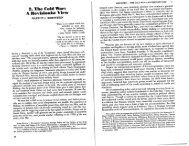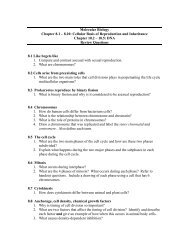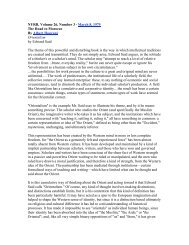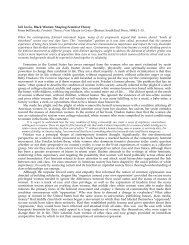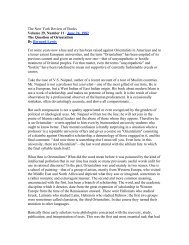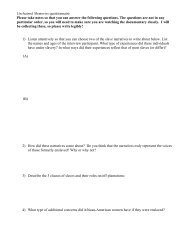Molecular Biology Chapter 28: Nervous System Action Potential ...
Molecular Biology Chapter 28: Nervous System Action Potential ...
Molecular Biology Chapter 28: Nervous System Action Potential ...
Create successful ePaper yourself
Turn your PDF publications into a flip-book with our unique Google optimized e-Paper software.
<strong>Molecular</strong> <strong>Biology</strong><strong>Chapter</strong> <strong>28</strong>: <strong>Nervous</strong> <strong>System</strong><strong>Action</strong> <strong>Potential</strong> WorksheetI. Resting <strong>Potential</strong><strong>28</strong>.3 Resting <strong>Potential</strong>resting potential, sodium-potassium pump1. What is the condition of a nerve cell at resting potential (the charge, location of different ions,etc.)?2. If a neuron’s membrane suddenly becomes more permeable to sodium ions, there is a rapid nettransport of the sodium ions into the cell. What are the two forces that drive the ions inward?
II.<strong>Action</strong> <strong>Potential</strong><strong>28</strong>.4 Nerve Signalstimulus, action potential, threshold potential1. What is an action potential?2. What is a stimulus and how does it trigger an action potential?3. Explain what happens during an action potential (charge, flow of ions, gates, threshold potential).4. Why is an action potential a chain reaction?
<strong>28</strong>.5 <strong>Action</strong> <strong>Potential</strong> regenerates itself along the neuron1. How is an action potential propagated along an axon?2. Why is an action potential and “all-or-nothing” reaction?3. If it is an “all-or-nothing” reaction, how does it relay different intensities of information?4. During an action potential, ions move across the neuron membrane in a direction perpendicular tothe direction of the impulse along the neuron. What is it that actually travels along the neuron asthe signal?
III. Synapse<strong>28</strong>.6 Neurons communicate at synapsesSynapse, synaptic cleft, neurotransmitter1. What occurs at the synapse?2. Why does the message travel in only one direction?<strong>28</strong>.7 Chemical synapseSummation1. Why does the membrane of a neuron resemble a switch board?2. What do neurotransmitters actually do to receiving neurons?3. What is the difference between excitatory and inhibitory neurotransmitters?
<strong>28</strong>.20 Memory and Learning.• Short-term memory stored in the frontal lobes.• The establishment of long-term memory involves the hippocampus.• Functional changes in synapses in synapses of the hippocampus and amygdala are relatedto memory storage and emotional conditioning.• Long-term depression (LTD) occurs when a postsynaptic neuron displays decreasedresponsiveness to action potentials. Induced by repeated, weak stimulation.• Long-term potentiation (LTP) occurs when a postsynaptic neuron displays increasedresponsiveness to stimuli. Induced by brief, repeated action potentials that stronglydepolarize the postsynaptic membrane. May be associated with memory storage andlearning.


